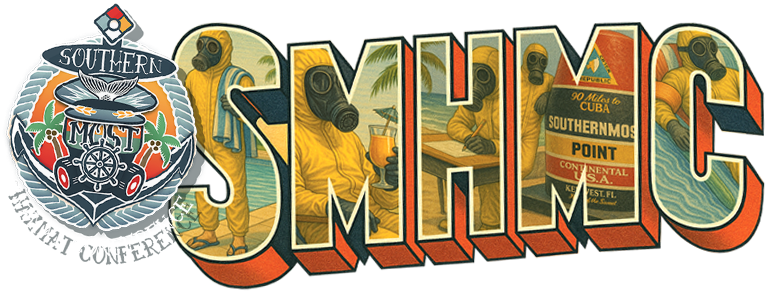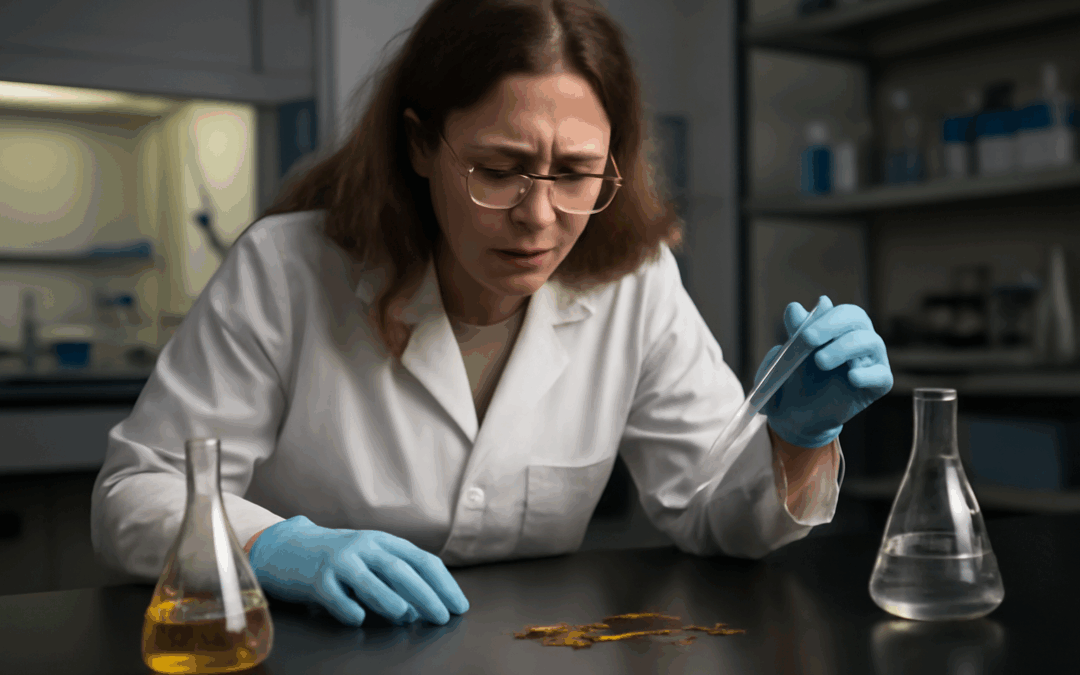When PPE Fails: The Tragic Case That Changed Lab Safety Forever
I sat down with Mike Monaco and Bobby Salvesen early one morning (finally recording without the background hum of lawnmowers) to talk shop, and what started as a routine podcast quickly spiraled into a gripping discussion about the hidden dangers of PPE failure.
And I don’t mean the kind where someone forgets to wear gloves. I mean the kind where you do everything right – follow protocols, wear gloves, use a fume hood – and still get exposed to one of the most toxic substances on Earth.
We kicked things off by talking about their newly launched survey, designed to help identify what people really want in hazmat training. But that was just the warm-up.
The real story? It began with a woman named Karen.
The Day Everything Went Wrong in the Lab
Karen Wetterhahn was no amateur. A respected chemist and expert in toxic metals, she worked at Dartmouth College and had decades of experience under her belt. On August 14, 1996, while working with dimethylmercury, she spilled a few drops from a pipette onto her latex-gloved hand.
She followed the cleanup procedures precisely – gloves on, fume hood, no shortcuts. But what she didn’t know (and what the lab safety standards at the time didn’t address) was that latex gloves offered no real protection against dimethylmercury.
It seeped right through.
And the worst part? She wouldn’t show symptoms until months later.
The Killer Chemical No One Saw Coming
Mike put it bluntly: “Dimethylmercury is one of the most toxic substances known to science.” It’s clear, it’s colorless, and just a few drops are enough to kill you. The compound crosses the blood-brain barrier, builds up in fat tissues, and destroys the nervous system from the inside out.
If you’ve ever read about Minamata disease – mercury poisoning from contaminated seafood in Japan – you’ve seen how devastating mercury exposure can be. But dimethylmercury is even worse. It’s fast, it’s silent, and it doesn’t wait for large doses. A drop or two on the skin, through the wrong gloves, and you’re on the clock.
That’s exactly what happened to Karen.
Not Operator Error. Equipment Error.
When PPE fails in hazmat response, it’s usually human error – wrong suit, poor seal, improper donning. Mike and Bobby agreed: most of the time, we blame the operator. But not this time.
Karen used the right category of gloves according to protocol. But no one had checked chemical compatibility. In 1996, nitrile gloves weren’t widespread yet. Labs used latex. That was just “what was on the bench.”
Nobody realized how easily dimethylmercury penetrates latex. Not until it was too late.
Dimethylmercury: A Quick Breakdown
For the hazmat crowd who like the nerdy details (and honestly, who doesn’t?), here’s what makes this chemical so terrifying:
- Formula: (CH₃)₂Hg
- Appearance: Clear, colorless, slightly sweet-smelling liquid
- Absorption: Skin, lungs, ingestion – you name it
- Toxicity: A few milligrams can be lethal
- Target: Central nervous system, kidneys, reproductive cells
- Onset: Delayed. Symptoms might not appear for weeks or even months.
Once in the body, it goes straight for your neurons. It damages mitochondria (your cells’ energy factories), inhibits enzymes, and causes neuron death. That’s why symptoms start with things like tremors and personality changes – and why they’re often too late to treat.
As Bobby said during our chat, “This stuff puts a permanent dent in your fender.”
Lessons for Hazmat Responders: Don’t Trust the Label – Check the Compatibility
Karen’s case reshaped lab safety protocols around the world. But for hazmat responders, there’s still a lot to take away here.
PPE needs to be chemically compatible, not just present. A glove is not a glove is not a glove. You can have all the right gear on paper and still be exposed because of material incompatibility. That’s why training isn’t just about “wear your PPE” – it’s about knowing your enemy.
And this isn’t limited to lab techs. We deal with acrolein, dimethylcadmium, and dozens of other “one-drop-will-kill-you” substances in field response. One bad call, one assumption, and the suit or glove you thought would save you might be what seals your fate.
PPE Standards: Still Catching Up
We talked a bit about regulation during the episode. OSHA’s 29 CFR 1910.132 requires hazard assessments and PPE selection, but it doesn’t necessarily specify which glove to use with which chemical. That leaves a lot of room for error unless you’re actively checking compatibility charts or using tools like Ansell’s Guardian tool.
Even Dartmouth’s head chemist at the time admitted, “We don’t think any of us recognized that compound was so penetrating.” And this was a team of highly trained professionals.
So imagine how easy it is for a first responder to miss something like this during a chaotic scene.
Final Thoughts: This One’s on All of Us
This episode wasn’t just a technical breakdown of a chemical. It was a gut punch. Karen Wetterhahn’s story is tragic not because she made a mistake, but because the system failed her. Her death sparked changes in lab safety and awareness about PPE compatibility, but we still have work to do – especially in the hazmat world.
It’s on us to:
- Know the materials we’re using
- Stay updated on compatibility
- Train smarter, not just harder
- Share stories like this one so others don’t repeat them
As Mike said, “Touch the brain, never the same.” This chemical literally rewires who you are.
Call to Action
If you’re in hazmat, fire service, EMS, lab work, or industrial safety – ask yourself right now: Do I know my PPE is compatible with the chemicals I’m handling? Or am I just assuming?
If you don’t know, find out. Talk to your training officers. Look up compatibility charts. Run drills with this case study.
And if you haven’t yet, help the guys out and take their training survey at thehazmatguys.com/survey. You’ll get a limited-edition poker chip coin (they’re calling it the “origin chip”) and free access to the bunker gear contamination tutorial that’s already getting rave reviews.
Let’s make sure no one else has to learn the hard way.


